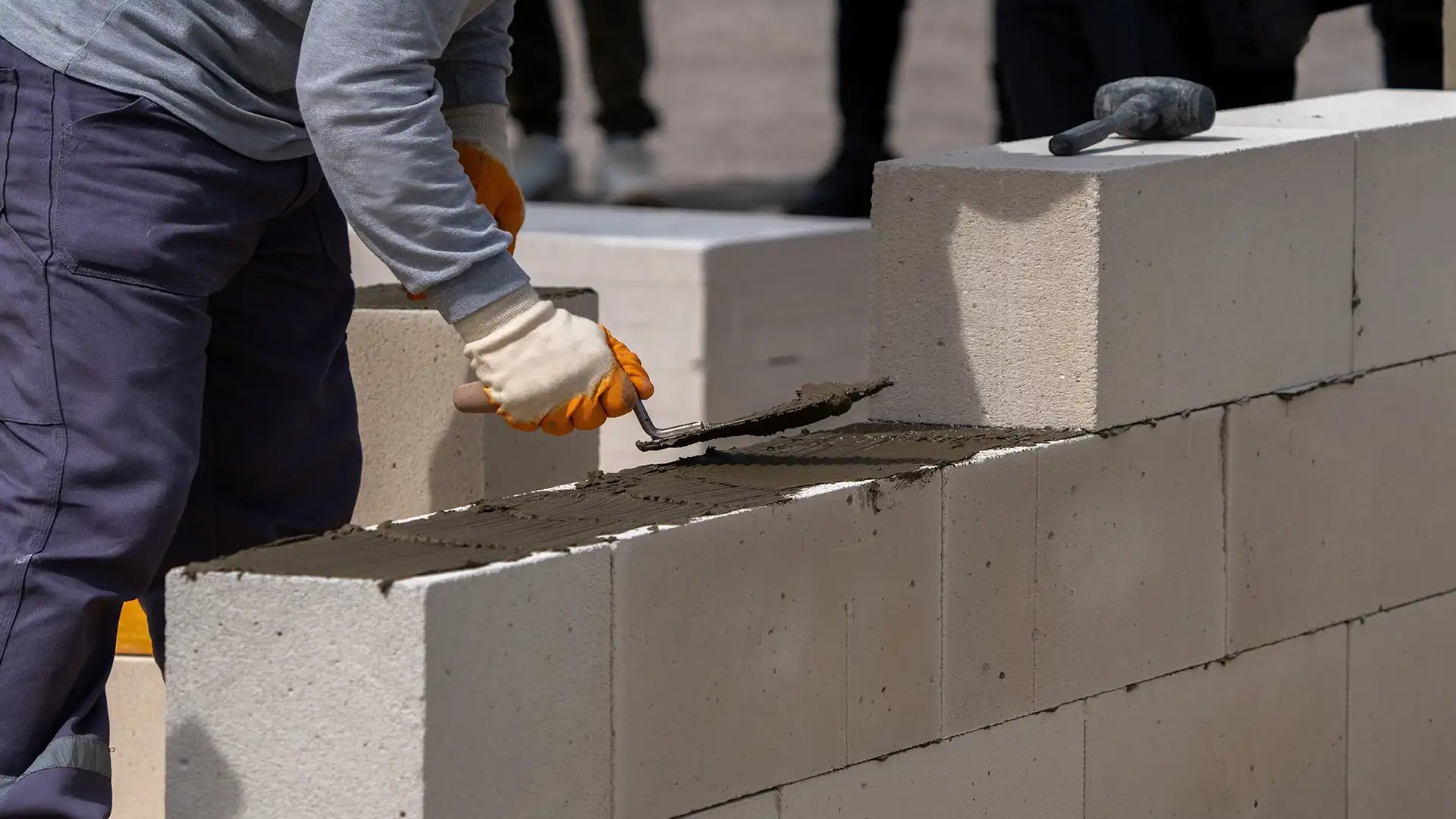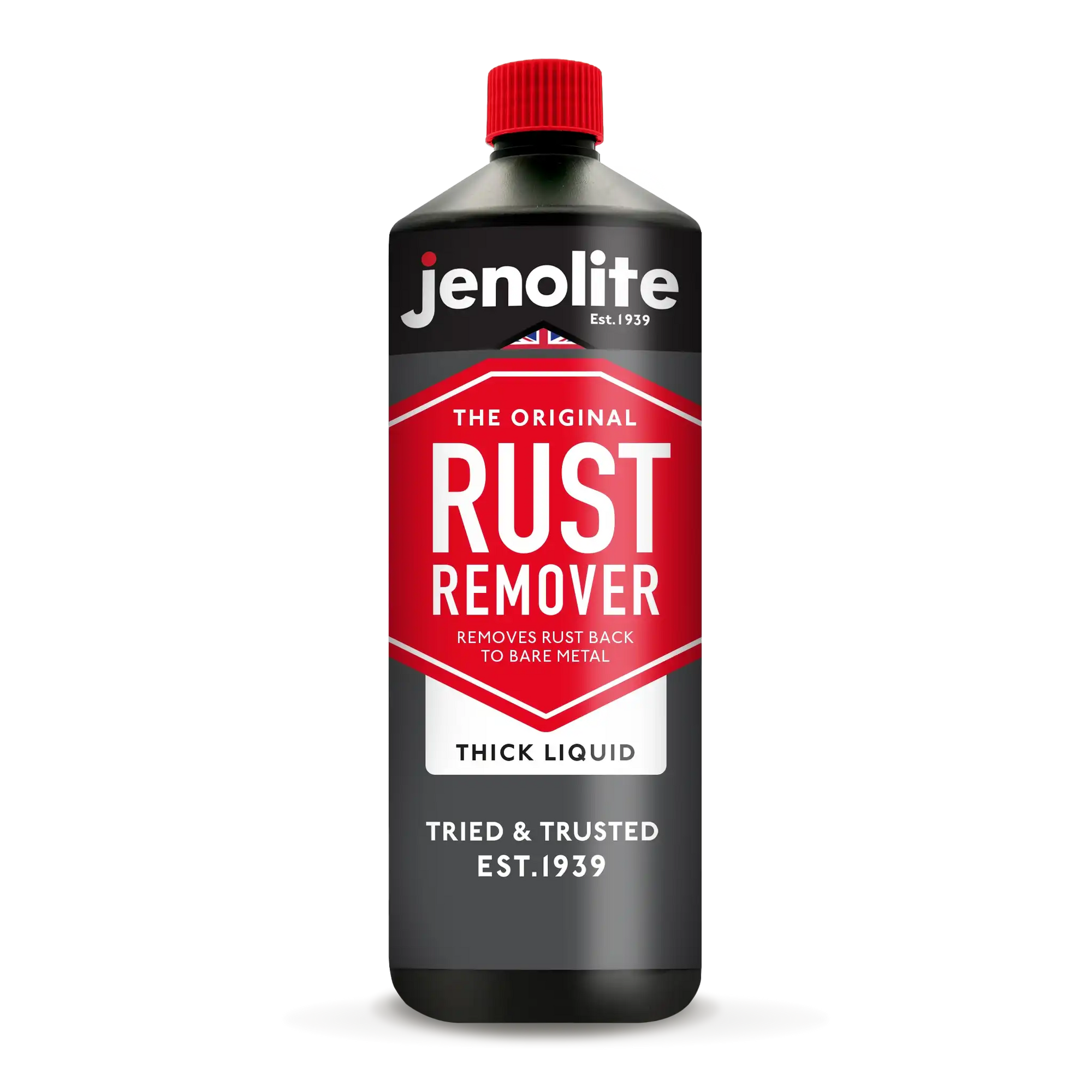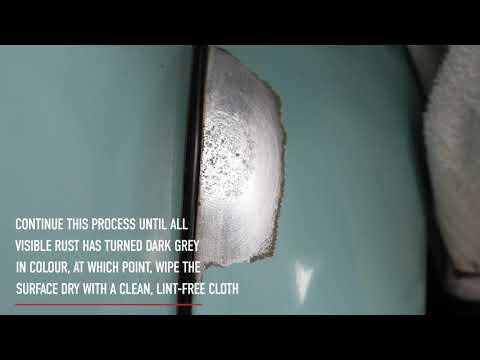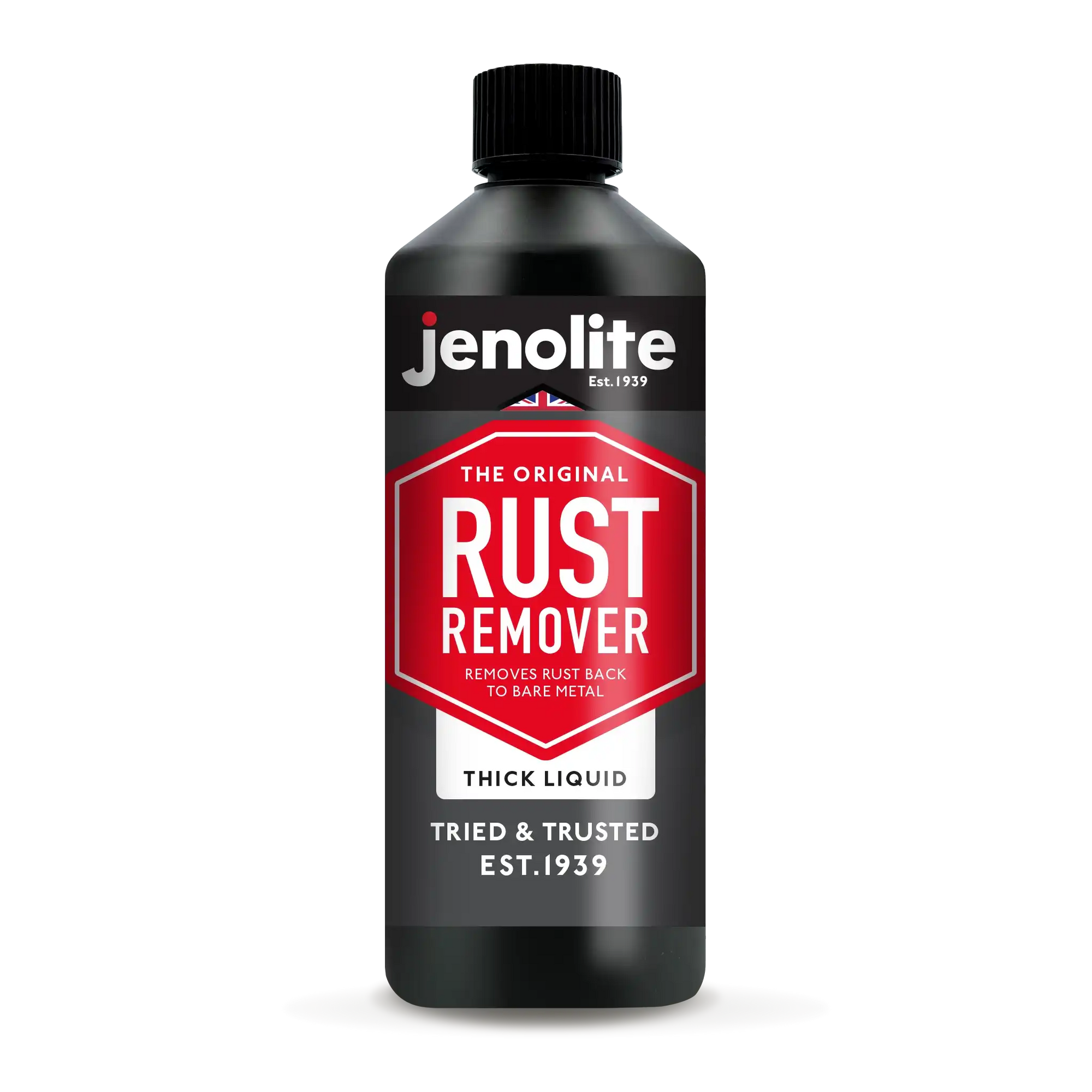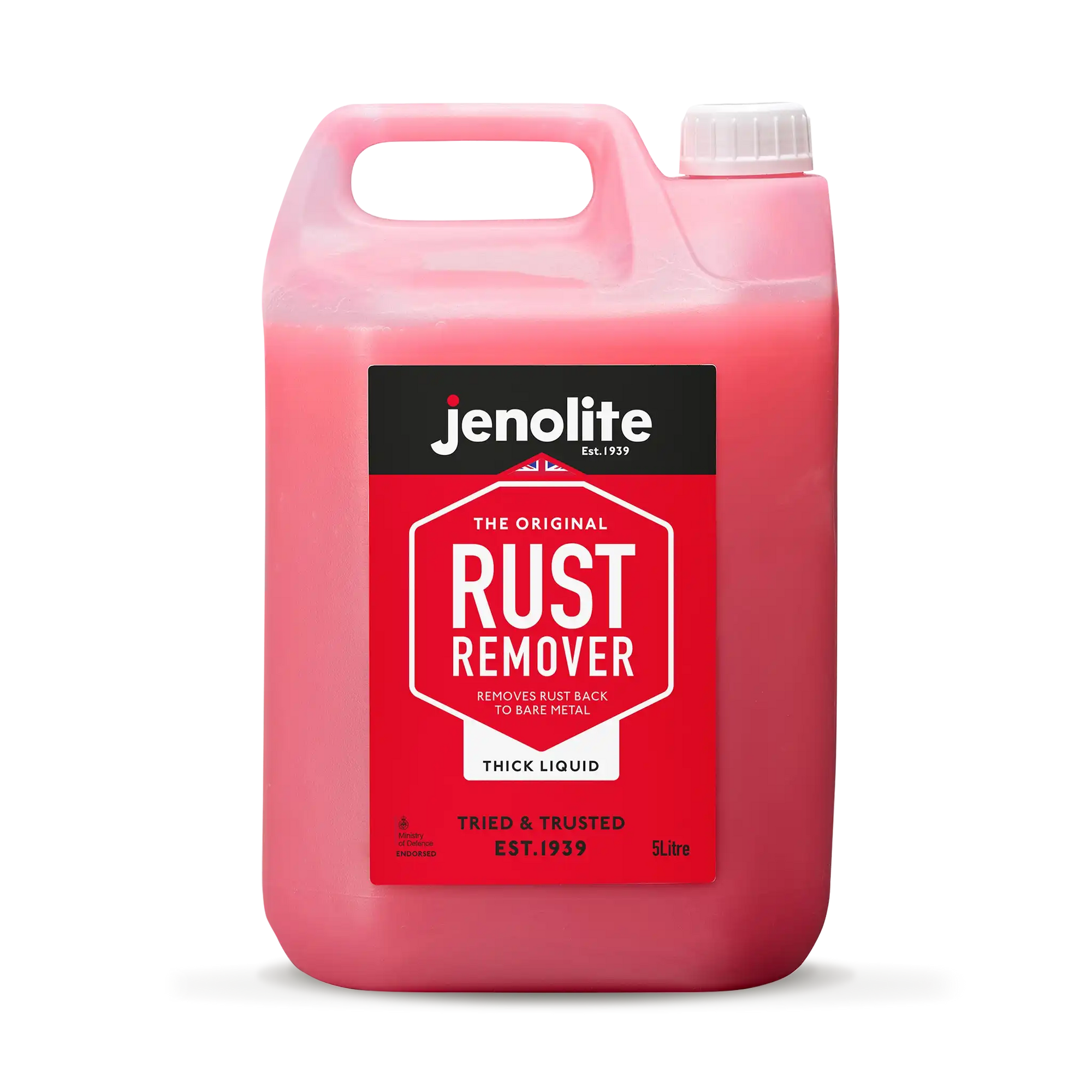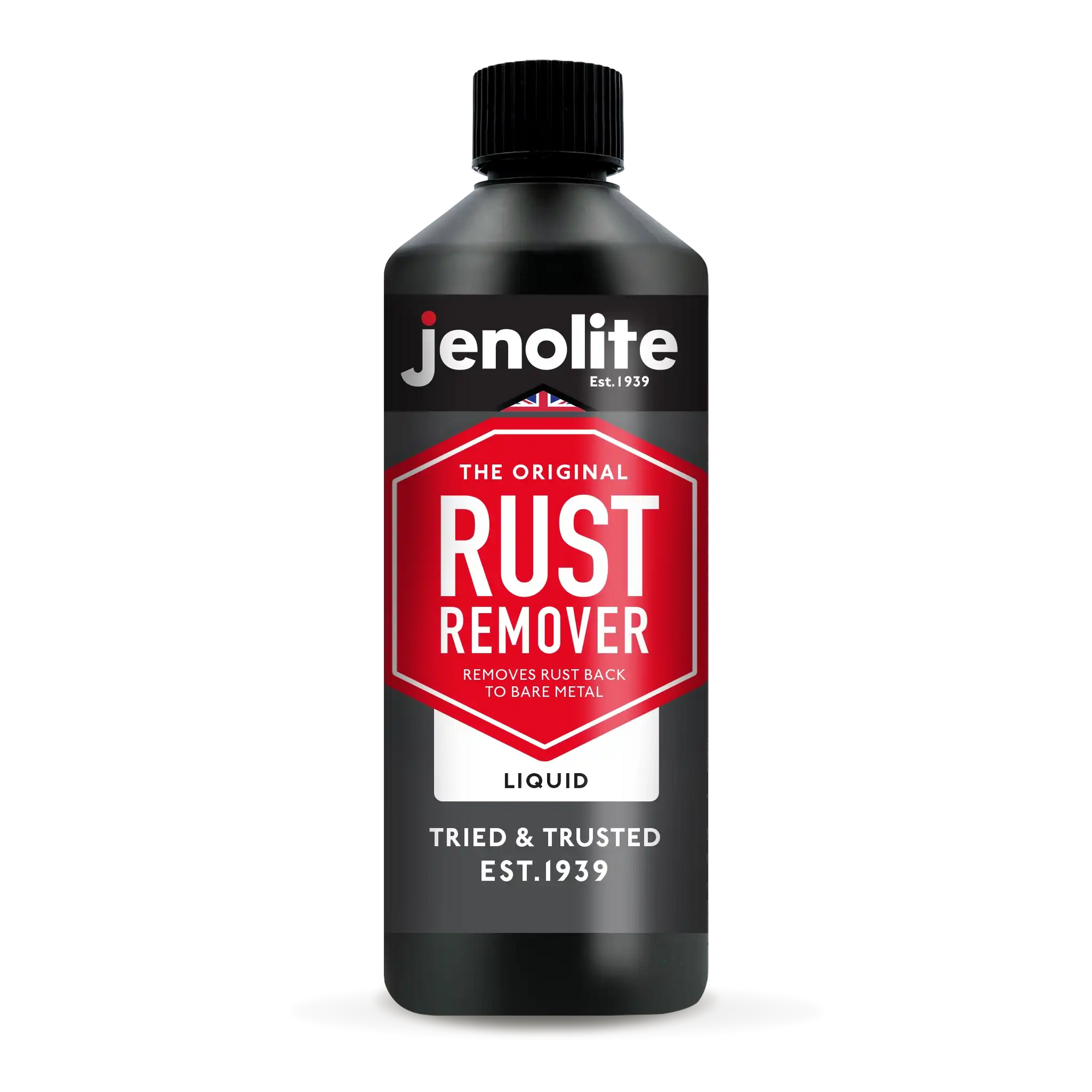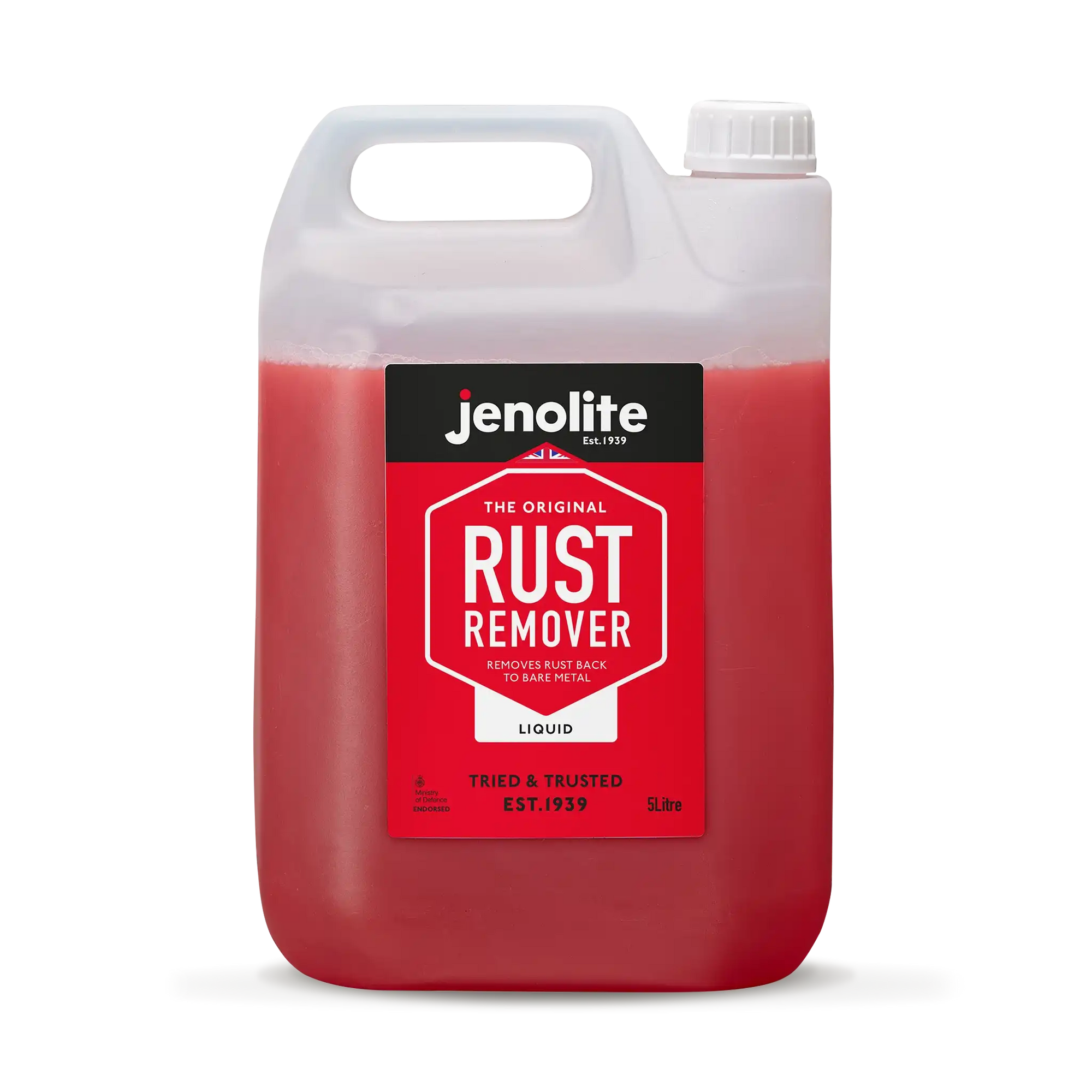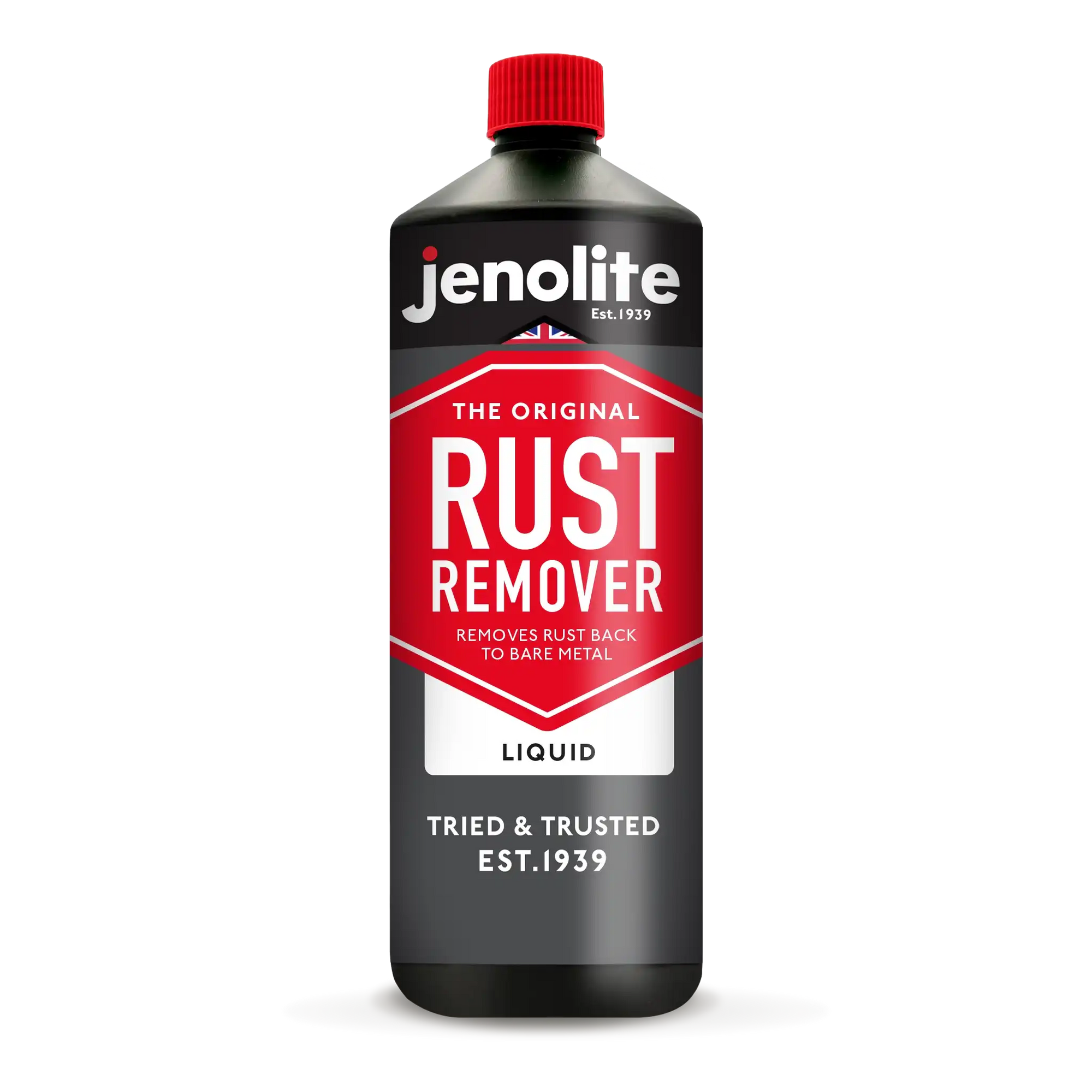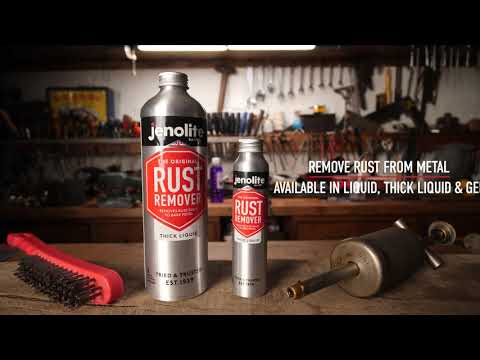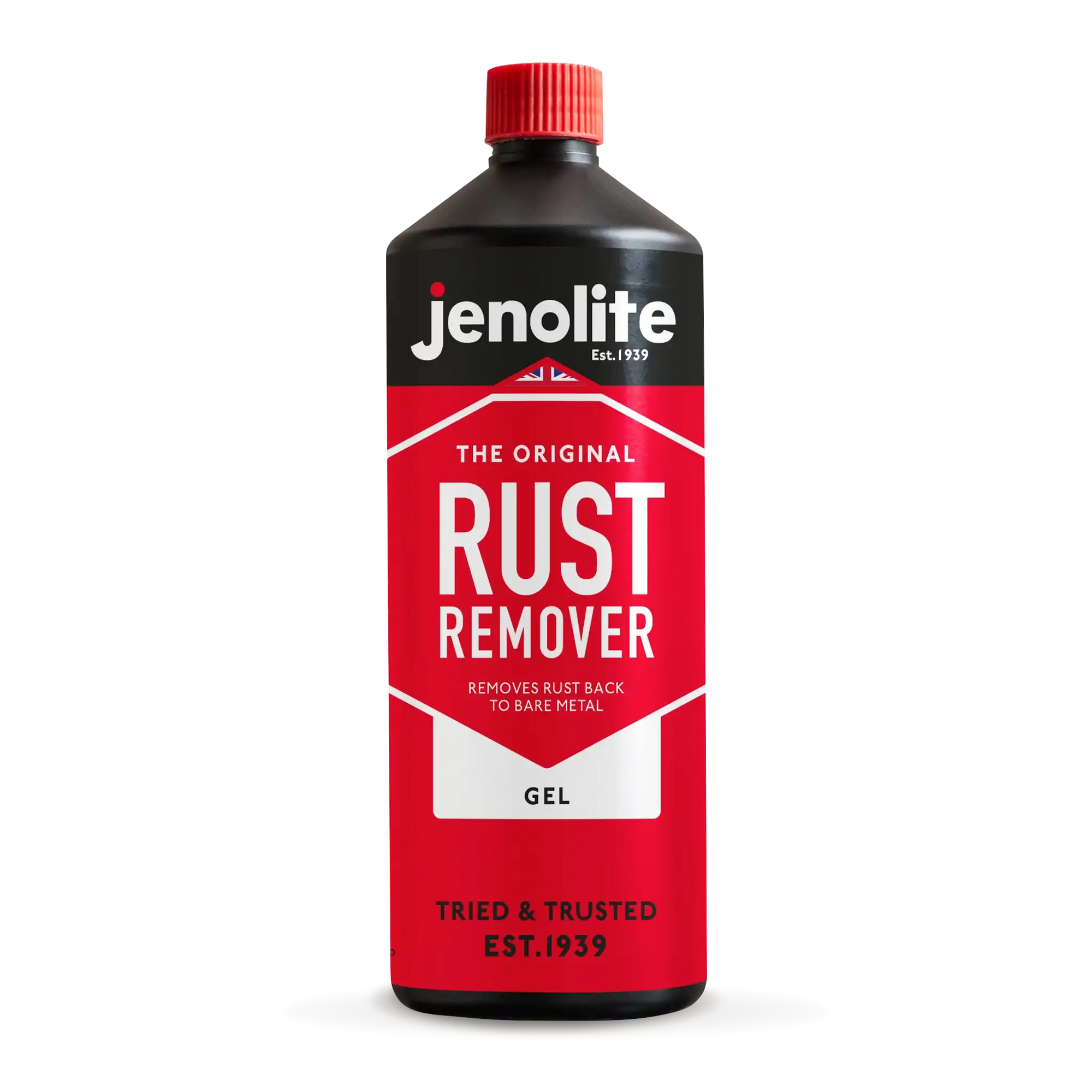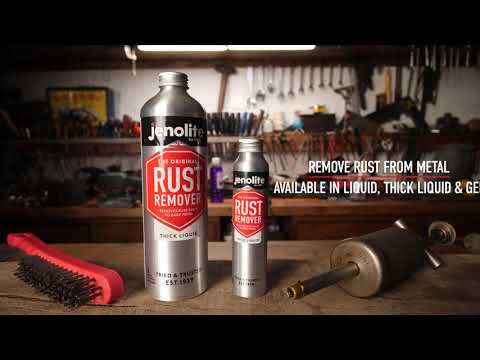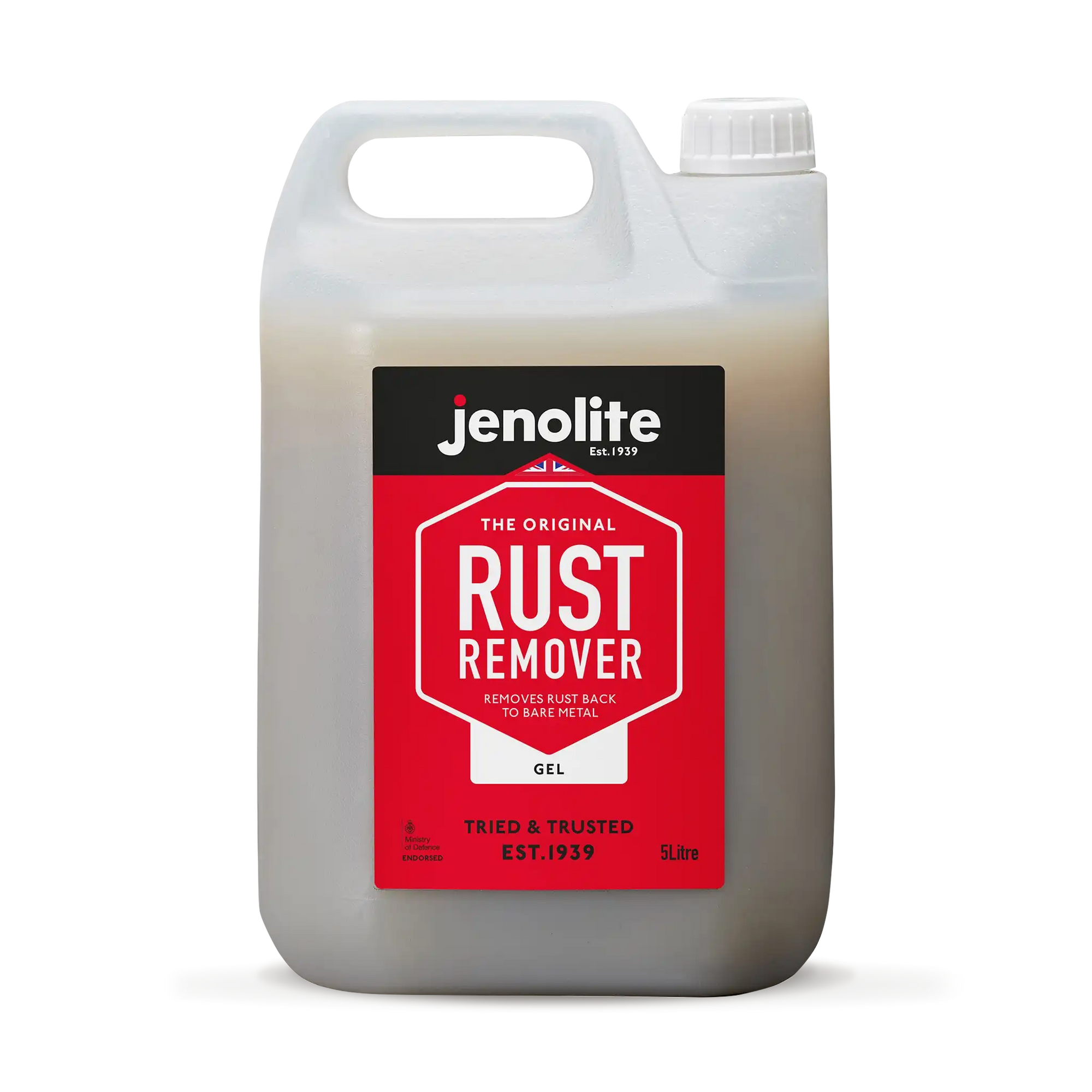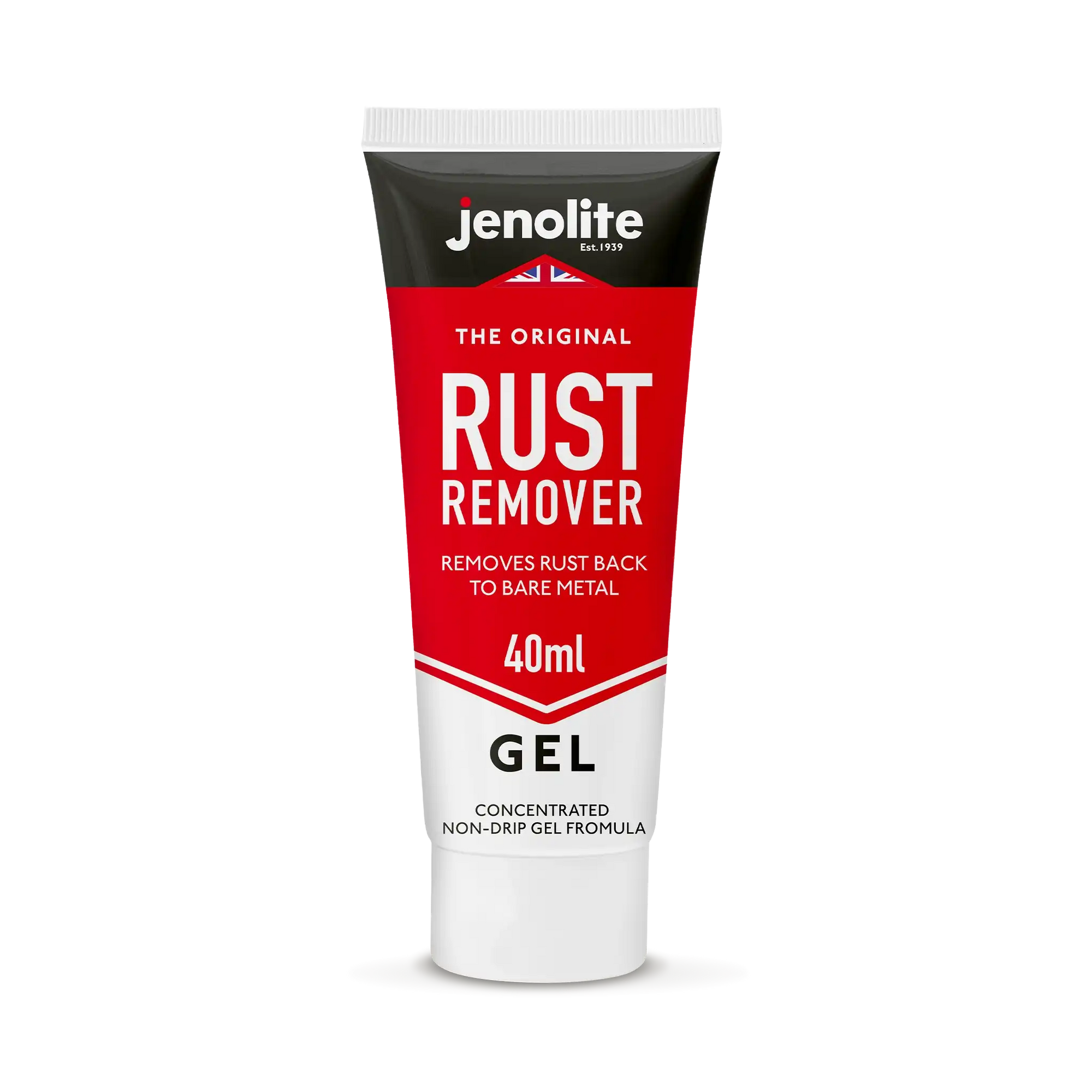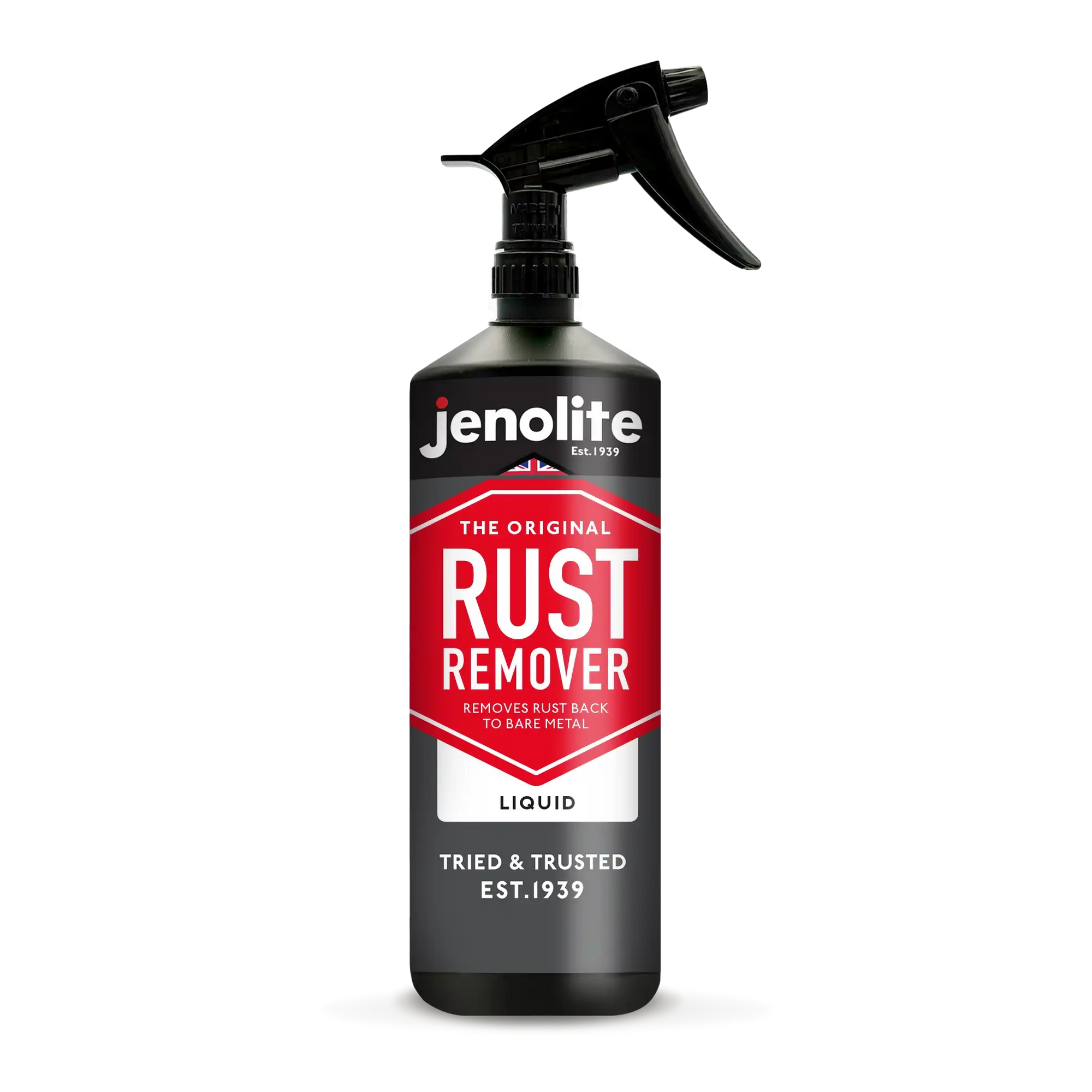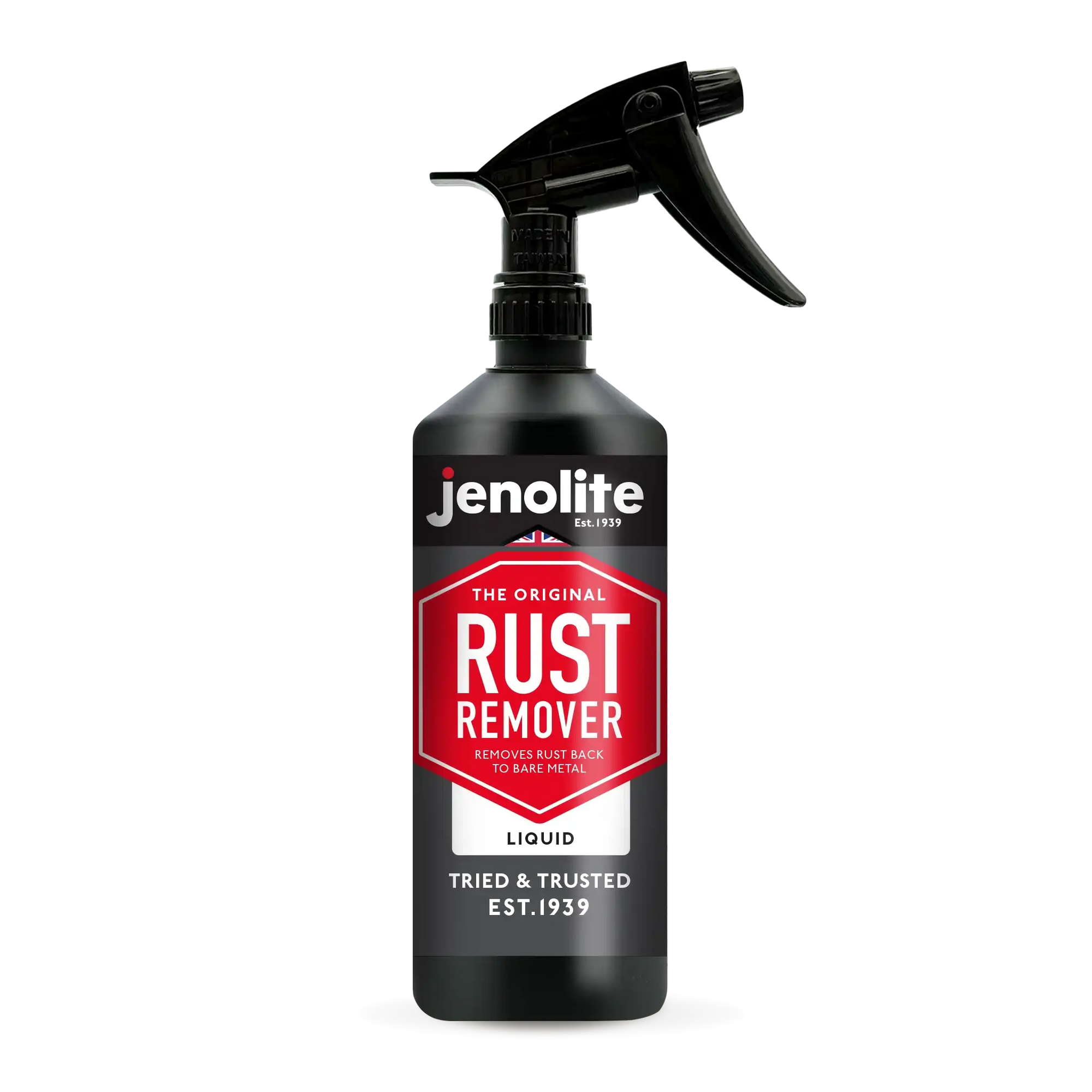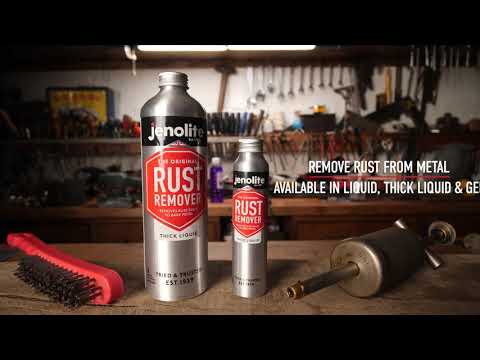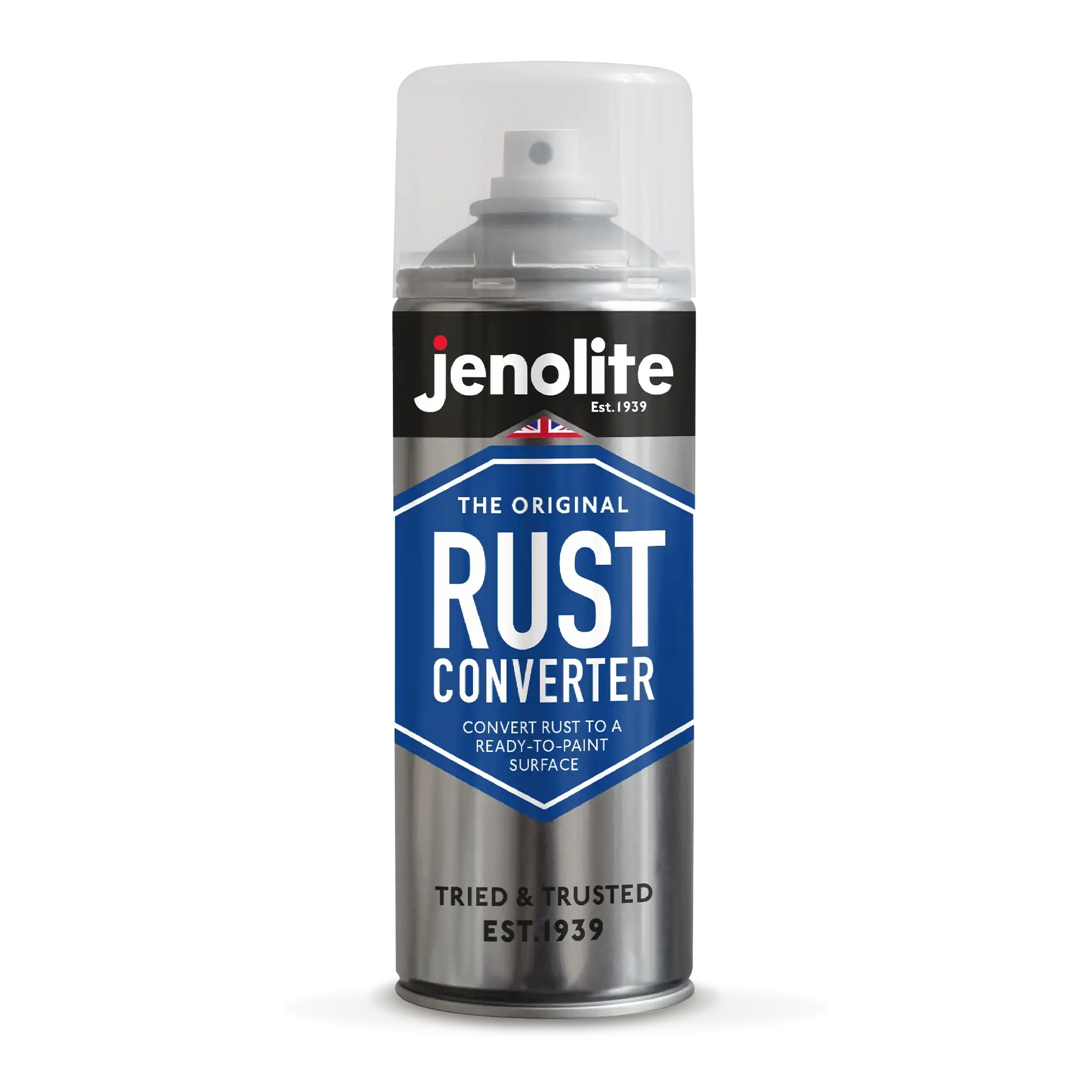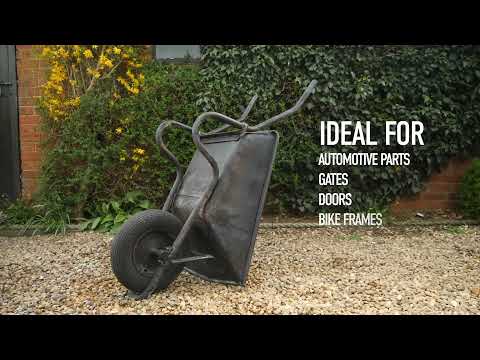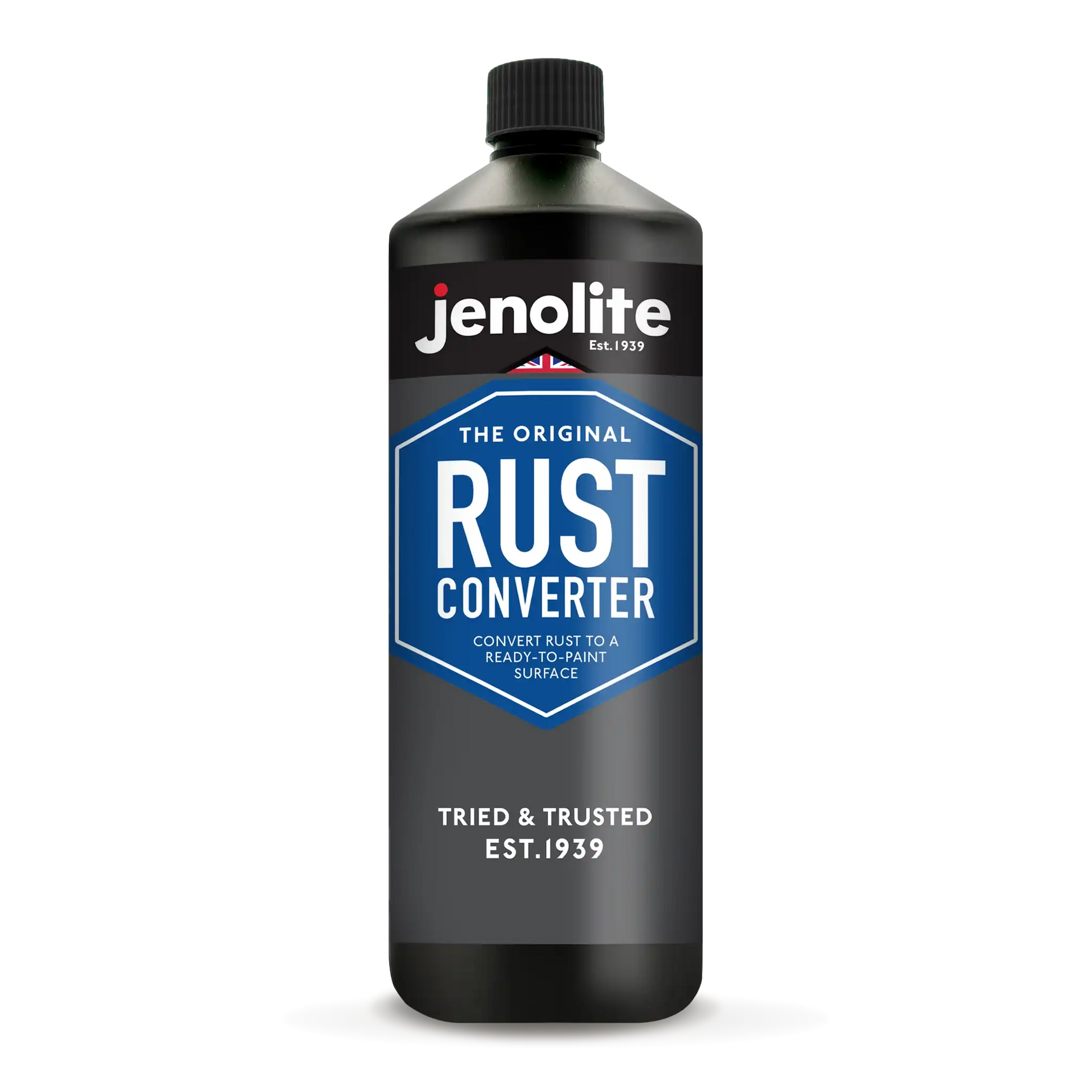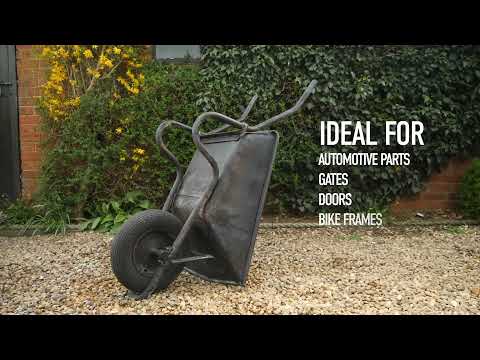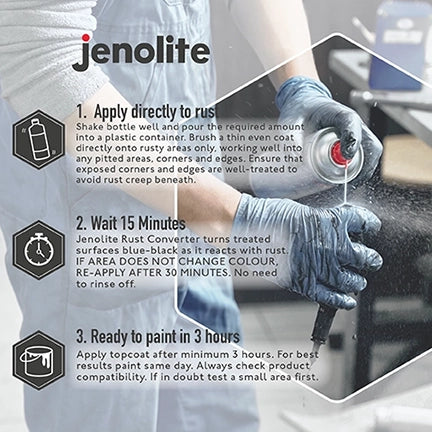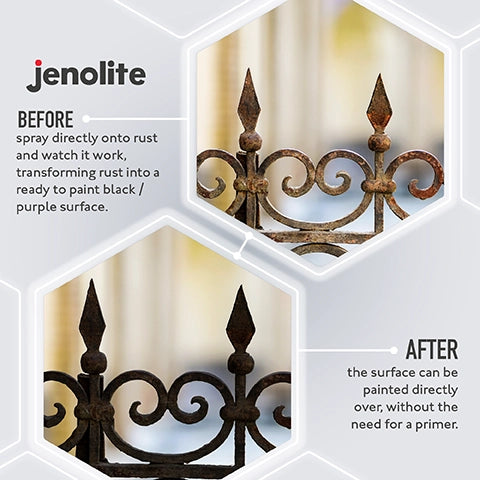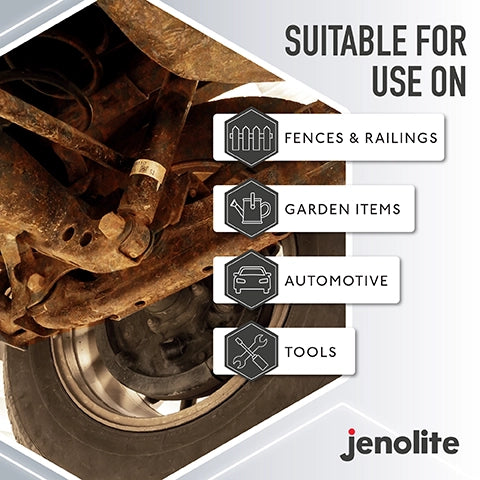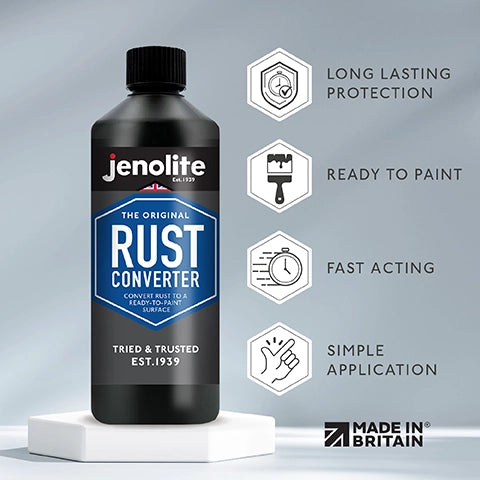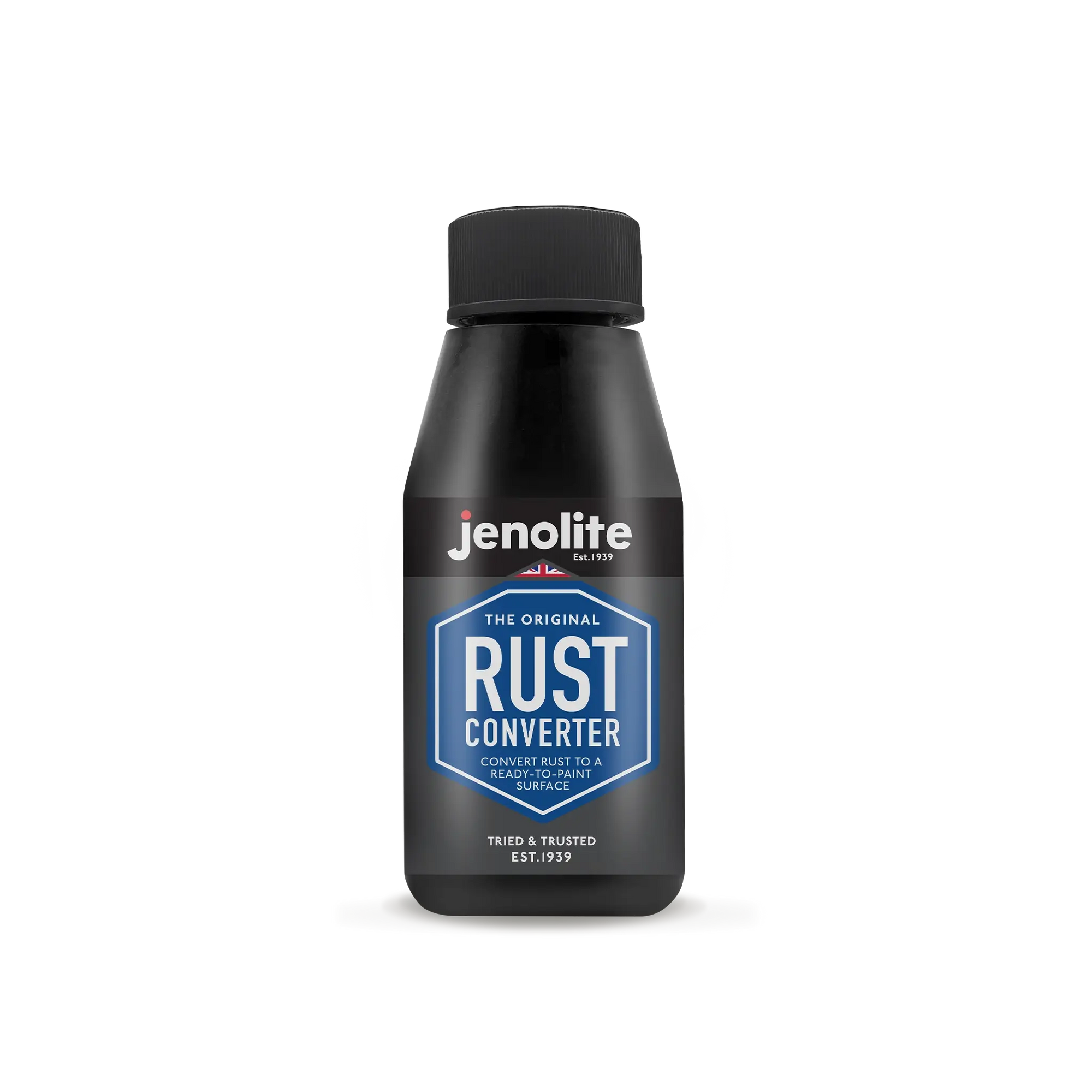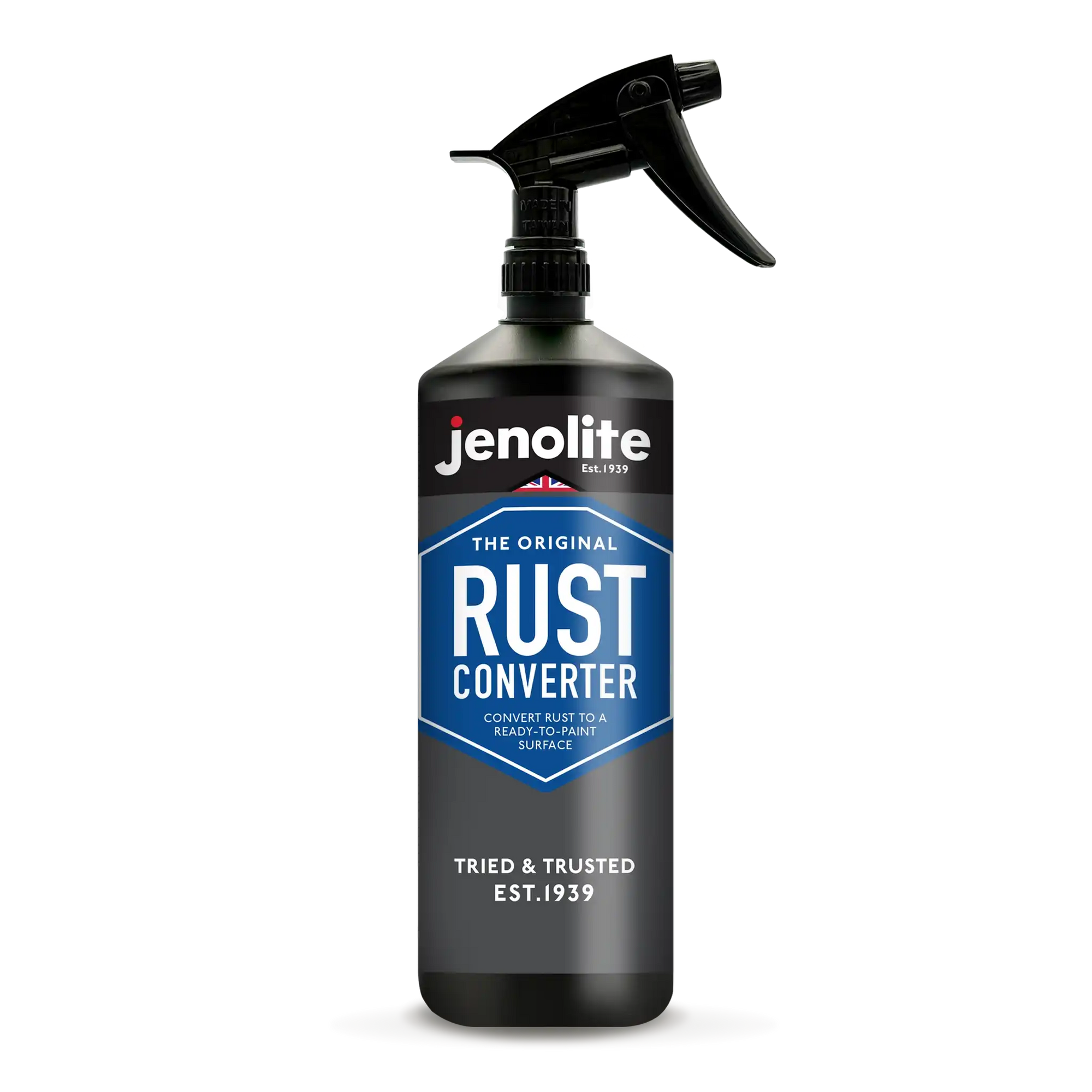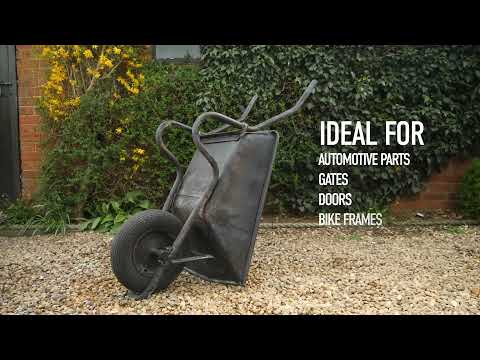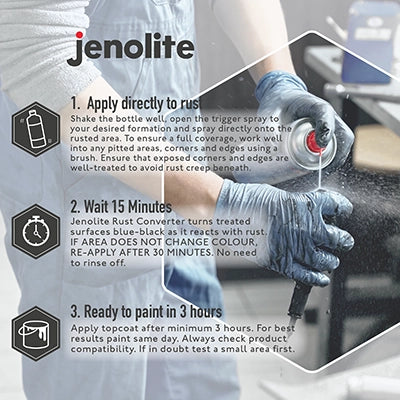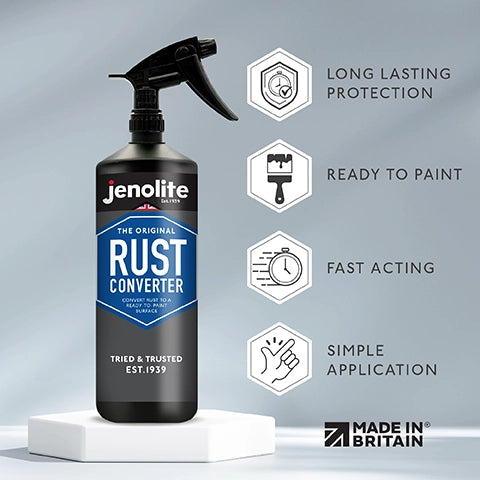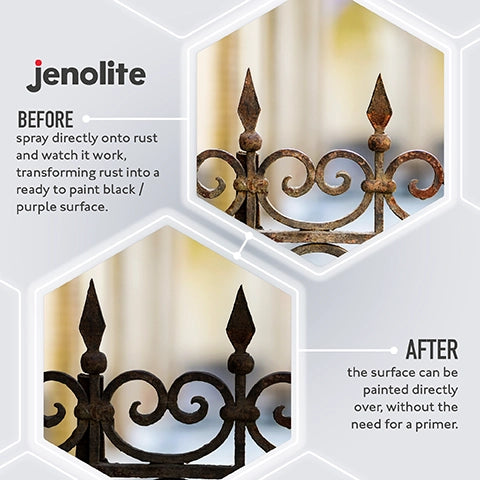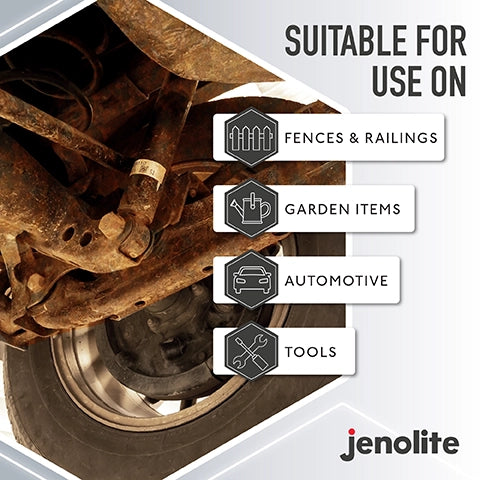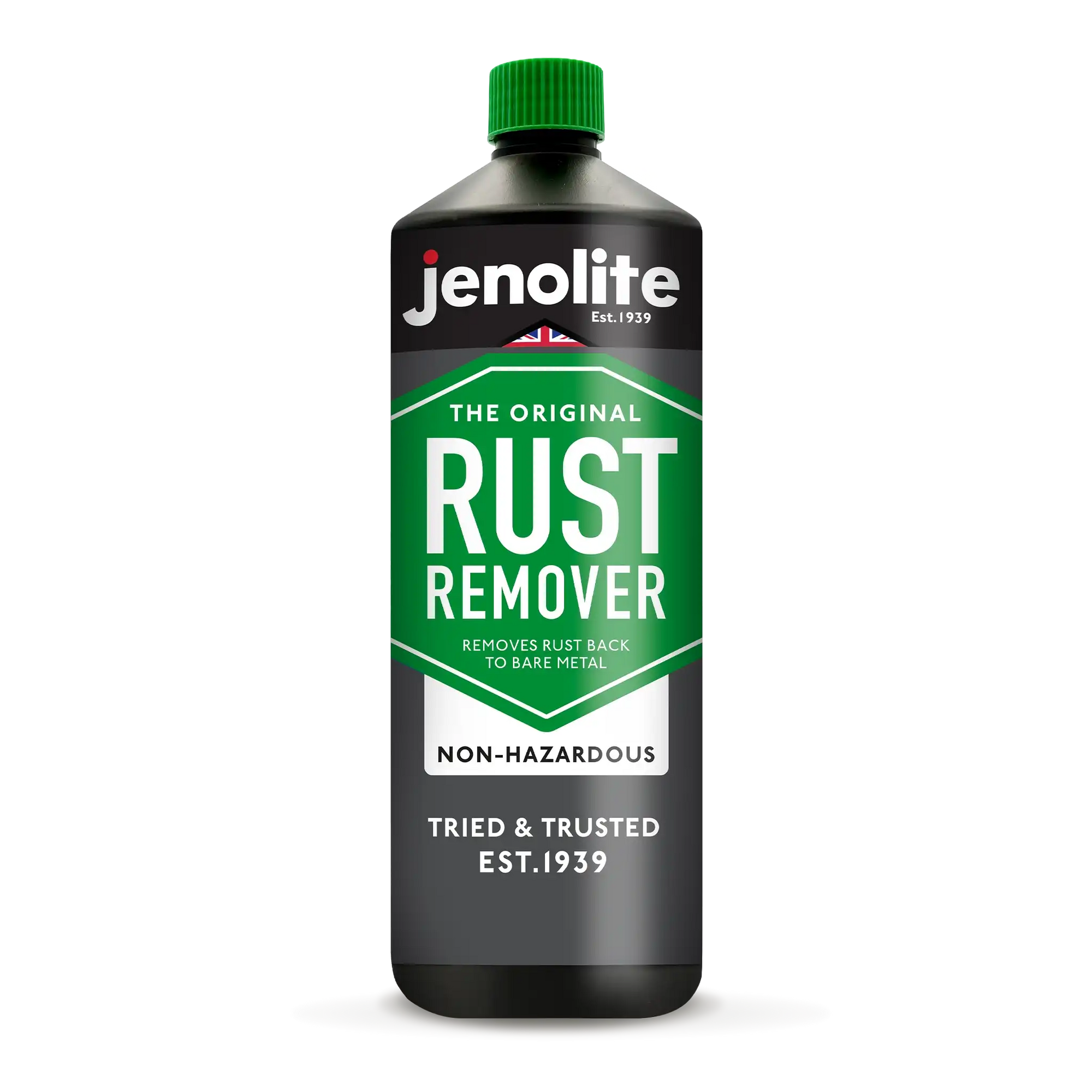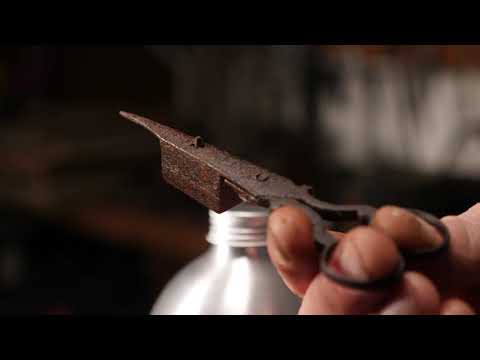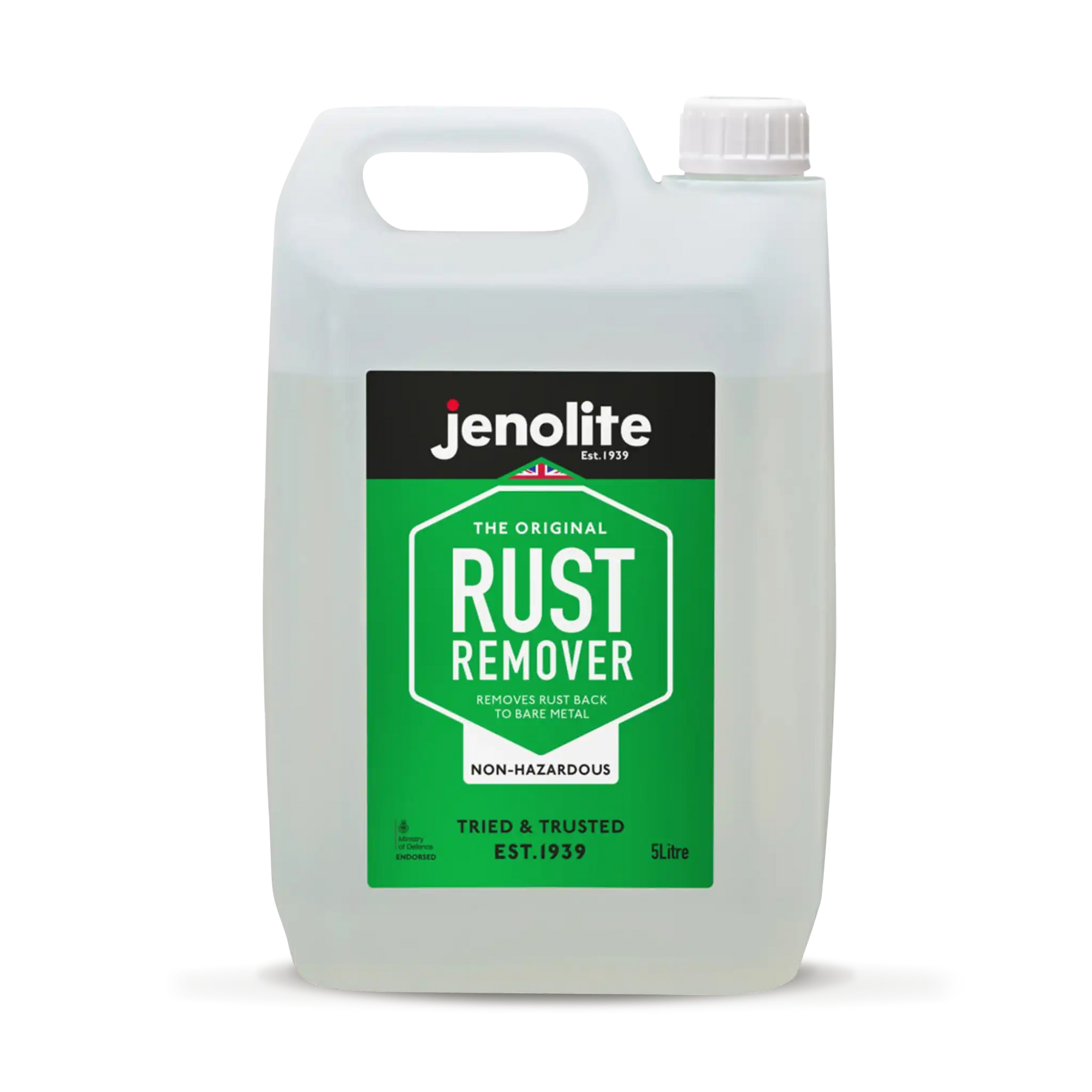Cars sometimes get neglected, with rust building up over time, caused by the surrounding environment or weather. If this is what’s happened to you, you might find yourself asking exactly how to get rid of rust from your car. This article will answer your questions on removing rust from your car and how to stop car rust from returning.
How to treat rust on a car? - Clean it first!
The first step when looking into getting rid of car rust is to clean the car, making sure it is free from debris and oil or grease from the surface. You can use washing-up liquid or baby shampoo in a bucket of warm water with a sponge. Alternatively, go to your local car wash.
If there are particular components of your car that need de-rusting then pay attention to these areas or for really small jobs just clean these surfaces.
If your car has existing paint that you want to remove due to fading, cracking, or peeling, use Jenolite Paint Remover Spray to tackle leftover paint before removing the rust.
How to fix car rust
Now you can get into tackling that rust. There are many rust removers for cars on the market, with articles claiming natural remedies for removing rust. However, Jenolite is an industry-standard rust remover, removing rust since 1939. Jenolite also supplies a range of lubricants and grease for cars to keep rust at bay.
Apply rust remover to affected areas
We recommend using Jenolite Thick Rust Remover or our Rust Remover Gel. This is because both are a thicker substances than our liquid and the non-drip formula doesn’t spread onto your paintwork.
Use a brush to apply the rust remover to your car and make sure all the rusted areas are covered well.
Keep the substance active
You can use a wire brush to keep the product active and from drying out, this should work out to every 5 minutes or so. If you notice the rust starts to dry out, apply more. The rust will turn a dark grey or black colour so you can see it’s working.
Wipe away
When you start to see the rust separating from the metal, using a microfibre cloth wipe the surface. The metal should have been brought back to a bare metal surface that is able to be painted over. If you can still see spots of rust then repeat the process.
How to remove small rust spots from car
For smaller spots you can use the Jenolite Rust Remover Gel, which is also available in a 40ml tube for small areas. This is a great way to target rust spots. Since it doesn’t spread out to other surfaces, you can use a small brush to really focus on those areas. Use the same method mentioned above to tackle these areas.
How to remove rusted bolts from the exhaust
For individual components, use Jenolite Rust Remover Liquid to fully submerge parts such as rusted bolts and nuts. Simply fill a plastic container with enough liquid to ensure all the items are covered and apply with a brush until you can see the rust coming off. After the rust has turned into a darker colour to show the liquid has reacted wipe with a lint-free cloth to remove excess liquid.
Using rust converter instead of rust remover
Some people may find that rust converter is a simpler way forward. Rust converter transforms hard to remove rust into a bare and stable compound ready for you to paint over. A rust converter actually stops the condition of the rust from getting worse and can be an easier option if your problem is particularly stubborn. However, for automotive applications, we recommend doing the job properly with rust remover.
How To Apply Rust Converter
Using Jenolite Rust Converter Liquid, apply to the affected area. Our products come in a range of applications for you to choose from, the trigger spray, an aerosol, and a liquid. The converter turns treated surfaces blue-black as it reacts with the rust. If it doesn’t then apply again in 30 minutes. The converter should react with the rust in 15 minutes. There is no need to wipe it off. You can then apply a topcoat after a minimum of 3 hours.
We don’t normally recommend a rust converter for your car as this can mask underlying issues such as structural damage or weakness so this is not something you'd want to simply cover up. We strongly suggest using rust remover instead to tackle the rust as it is better to get rid of the rust than convert it. Use a rust converter as a last resort to our car body.
If you are still unsure of the differences between rust remover and converter or want to know which method is the best for your rust removal project, read our article Rust remover vs rust converter.
Other questions we get asked
How to remove rust from alloy wheels
For alloy wheels, it is recommended you use the Jenolite Rust Remover in the method mentioned above. You can remove loose rust with a steel wool or wire brush first. This is because alloy wheels are most likely affected by surface rust and it’s best to remove the rust fully to avoid misshapen alloys.
Once the rust has been removed, you can then use Jenolite Alloy Paint Aerosol in silver to renovate and refurbish your alloys for that new car look!
Shake the can well before use so that the agitator ball can be heard rattling. Then apply the aerosol in smooth motions from 15-30cm away. Coat the surface with a thin and even layer, wait two hours for the alloys to fully cure.
How to remove rust from a chrome bumper
For chrome, it is recommended that you use our Non-Hazardous Rust Remover Liquid. A more gentle formula isn't as harsh as other products and chemicals and is ideal for use on softer metals. You can apply this with a paper towel and it will work in 4-24 hours. Work the solution using a wire or steel wool brush. This is a great alternative to chemicals that could damage your chrome. Jenolite non-hazardous is reusable too which makes it great value for money.
Finish off your rust removal with Jenolite Chrome Spray Paint for a decorative finish and hard-wearing layer.
For more information on removing rust from chrome, read our article on tackling rusted chrome and other delicate metals.
How to stop rust on cars
So, it’s now a good time to learn how to prevent rust from appearing in the first place. Jenolite stocks a variety of products that help keep rust at bay by forming a protective shield against corrosion. Our Rust Shield Aerosol forms a clear barrier between the metal and water, so it can’t react and is highly resistant to cracking & crazing. It provides a glossy finish. Apply a few layers allowing each layer to dry fully.
You can also use Jenolite Waxoil, a thicker waxy texture coating that prevents corrosion and protects your car. This 500ml spray is perfect for cars and forms a flexible, weatherproof skin that doesn’t crack, dry out or wash off in the rain.
If you are wanting protection from salt, ice and snow then Bitumen Undercoat Anti-Corrosion Spray in black is for you. Ideal for underbodies and protects against corrosion. This creates a tough and waxy skin. Finish off your rust removal with Jenolite Chrome Spray Paint for a decorative finish and hard-wearing layer. You can also use our BBQ paint which is suitable for use on automotive parts.
We’d love to hear your feedback and see your restorations on Facebook, Twitter and Instagram so get in touch!
If you found this article helpful, check out these related articles below.

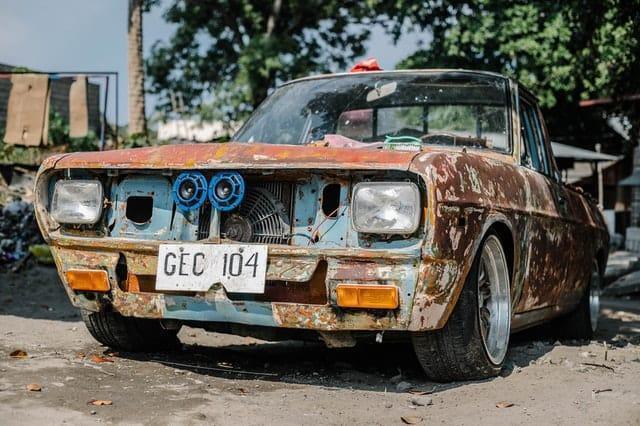
![Rust Remover vs Rust Converter: Which To Use? | [UPDATE 2024] A comprehensive guide](http://www.jenolite.com/cdn/shop/articles/Rust_Remover___Converter.webp?v=1706616225&width=2000)
